Necessities of life
-
Chemicals
- Ammonia
- Methane
- Carbon dioxide
- Water
-
Energy
- Lightning, radioactivity, volcanism, solar UV radiation
-
Organic (carbon-based) molecules
-
Building blocks of life
-
Amino acids
- Proteins – control metabolism
-
Nucleotide bases
- Genes
-
Amino acids
-
Building blocks of life
Urey-Miller experiment
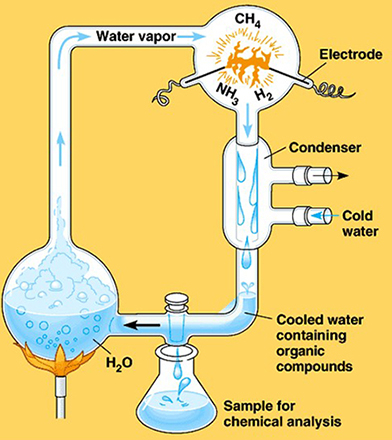
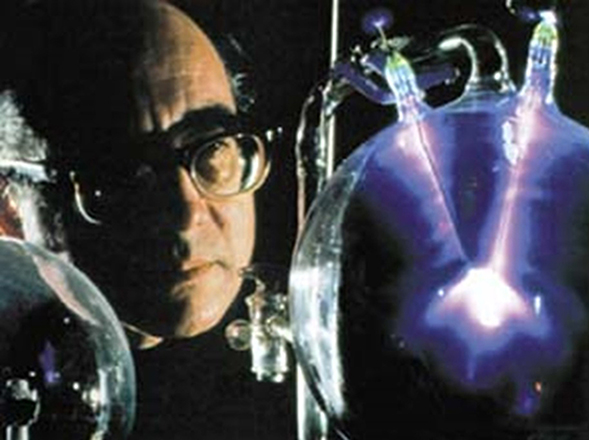
In 1953, Harold Urey and Stanley Miller were the first scientists to combine the materials believed to be present on Earth when life arose, a primordial soup of ammonia, methane, carbon dioxide and water, and pass an electric discharge through it to simulate lightning. Analysis a few days later showed that the mixture contained amino acids, fundamental to all living organisms on Earth. Nucleotide bases were created in similar experiments a decade later.
Urey-Miller experiment
- Started with a soup of primordial material
- Water, methane, carbon dioxide, ammonia
- Added electrical discharge (“lightning”)
- Mixture developed amino acids
- Later experiments similarly developed nucleotide bases
-
Even later experiments united amino acids into proteinlike blobs similar to cells
- Resist dissolution
- Cluster into droplets
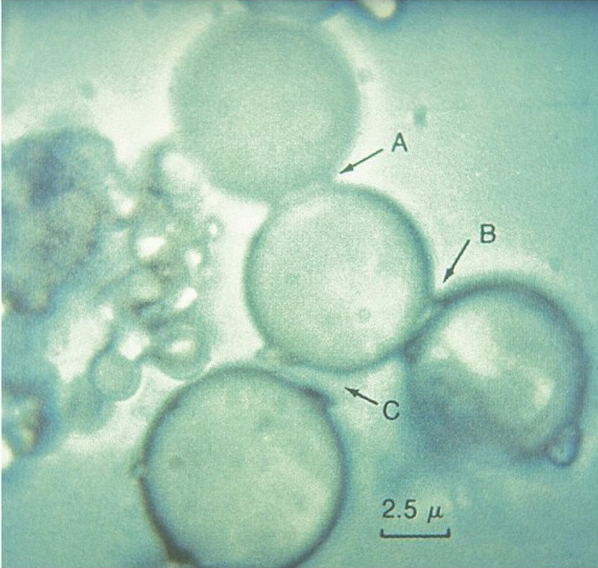
© 2005 Pearson Prentice Hall, Inc
Microspheres contain a billion amino acid molecules were created during later experiments. These microspheres resist dissolution and tend to cluster into droplets, exhibiting simple self-organization, and sometimes produce smaller microspheres, reminiscent of reproduction. No one is claiming that they are alive, or that life has been created through chemistry, but we have been able to replicate some of the basic behaviors of very simple organisms.
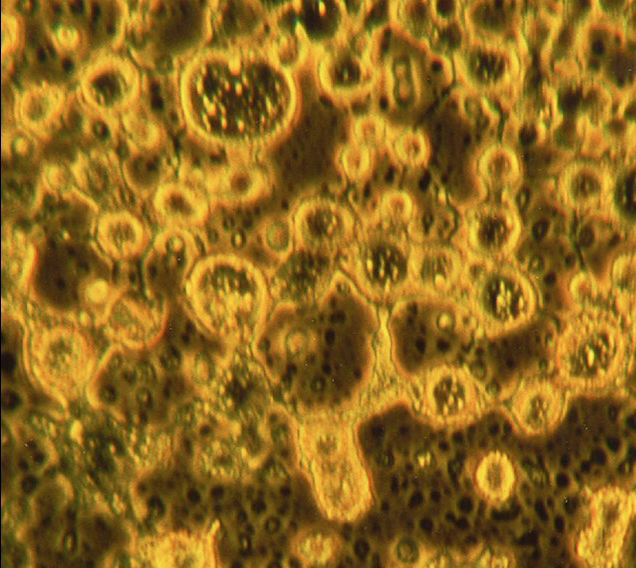
© 2005 Pearson Prentice Hall, Inc
Globules containing organic molecules were produced from radiated interstellar matter. This material is not alive, but these finding do support the notion that there is a possibility that life on Earth could have originated in space. Meteorites have also been shown to contain organic molecules.
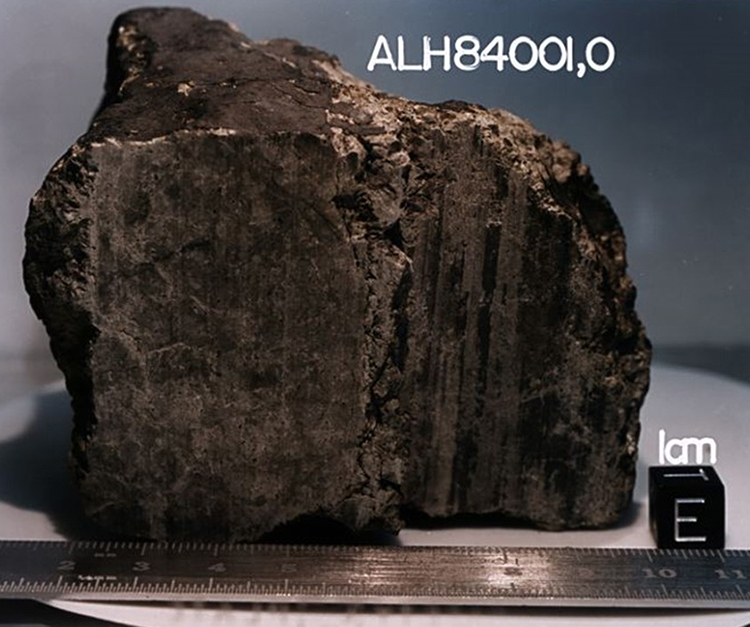
The meteoroid ALH84001, discovered in Antarctica in 1984, is one of ten rocks believed to have come from Mars which contain organic carbon compounds. The meteroid is believed to have been created on Mars some four billion years ago and subsequently ejected from Mars by a large impact. When the meteoroid was discovered, it was thought that it might contain fossil organisms from Mars, but that claim was strongly challenged.
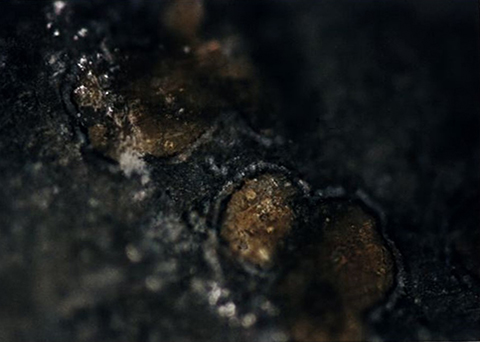
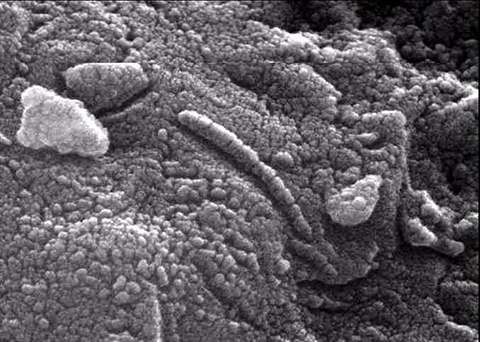
Carbonate globules (left) found in ALH84001 contain very pure magnetite, reminiscent of material found in magnotetic bacteria on Earth, that function to orient the bacteria. The tubular structures (right) are similar in shape to bacteria found on Earth, but very much smaller.
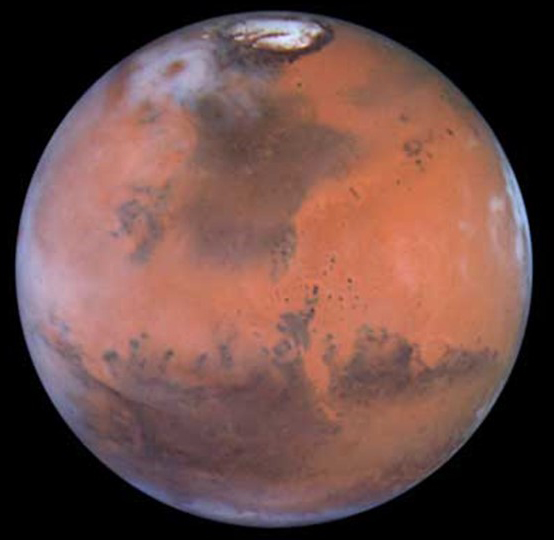
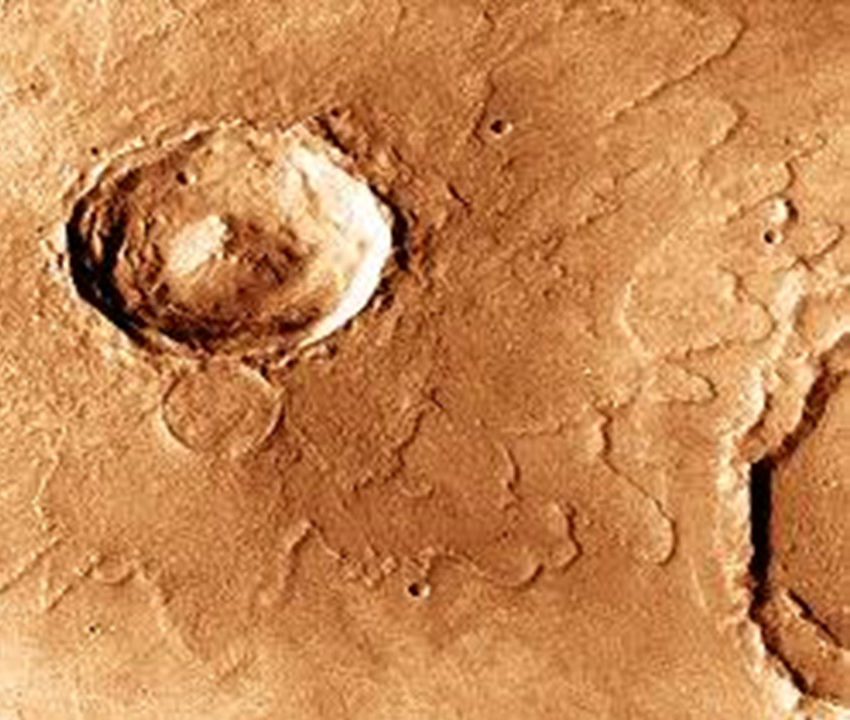
Conditions on Mars in the distant past may have conducive to the origin of life. Evidence of large amounts of liquid water on the surface of Mars indicate that Mars was much wetter in the past and contained a thicker atmosphere. Structures like this "slosh crater" indicate that permafrost existed on the Martian surface as well. It is believed that Mars lost most of its atmosphere when it cooled to the point where the liquid iron core became solid, greatly decreasing the strength of the magnetic field. Without a strong magnetosphere, the solar wind blew away much of the Martian atmosphere. We are searching for signs of past or present life on Mars, but have not found any trace of life to date.
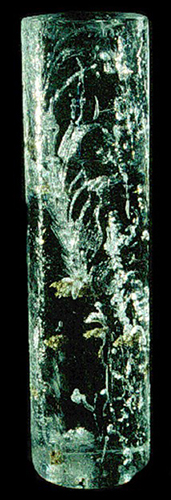
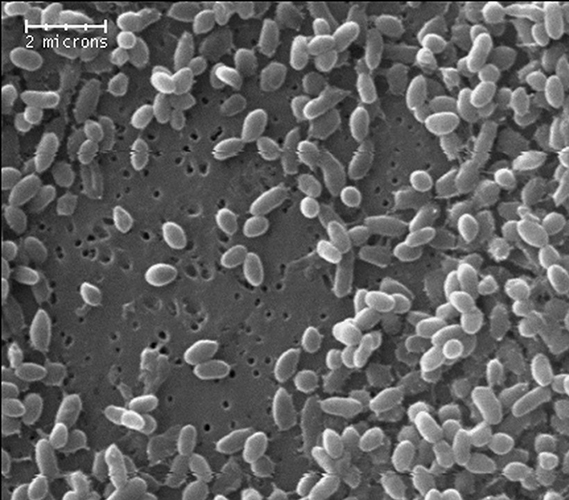
Image source (left) Image source (right)
Ice core samples from Antarctica (left) contain bubbles, debris and bacteria that have been trapped in the ice for hundreds of thousands of years. These microbes (right) were found in a 100,000 year old Greenland glacier ice sample. These ancient bacteria developed metabolism and started to grow after being warmed up. Older bacteria, some that had been trapped in the the ice for as much as eight million years, did not come back to life when thawed.
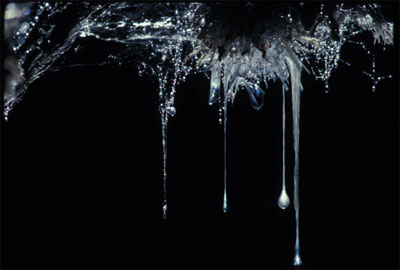
(C) 2007 California Academy of Sciences
Life forms that grow in conditions that are too extreme for most kinds of organisms are called "extremophiles." These extremophiles, called snottites, thrive in darkness on gases that are poisonous to most life forms. They derive their energy from chemosynthesis of volcanic sulfur compounds.
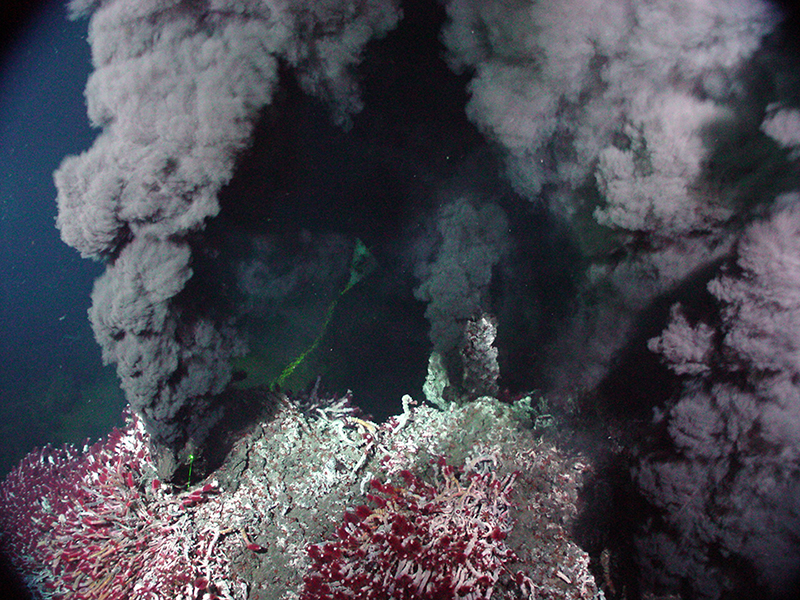
Hydrothermal vents known as "black smokers" vent volcanic gases in regions such tectonic plate boundaries found at the bottom of the ocean. Extrophiles here live at very high pressure in total darkness. Extremphile bacteria harnessing hydrogen sulfide for energy form the basis for entire ecosystems living near the vents.
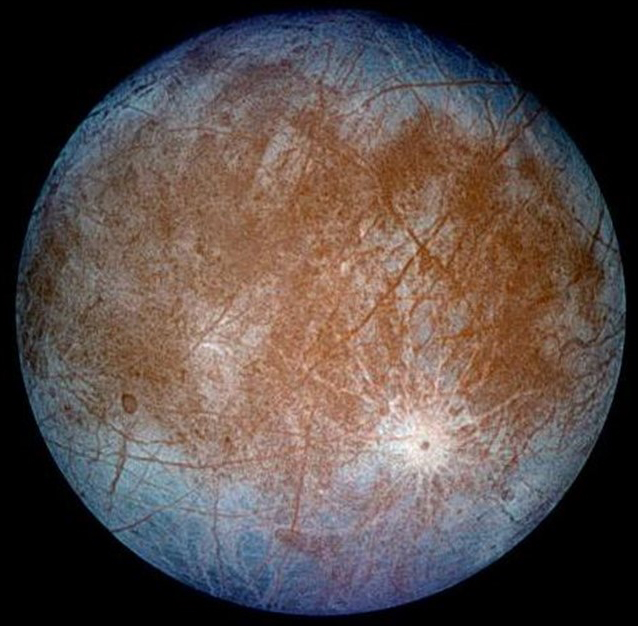
Jupiter's moon, Europa, is thought to possess vast oceans of liquid water beneath its frozen surface. The brown areas in the ice may be evidence of suboceanic vents.
NASA's planned mission to Europa currently involves making multiple orbits around Europa taking measurements of its gravitational field. Tidal flexing from Europa's elliptic orbit around Jupiter, combined with orbital resonances with other Jovian moons, serve to warm Europa enough for vast deposits of water to exist in a liquid state below the frozen surface. Europa appears to have one of the highest probabilities of finding extraterrestrial life in our solar system. The study of extremophiles here on Earth help us understand what signs of life might look like on Europa.
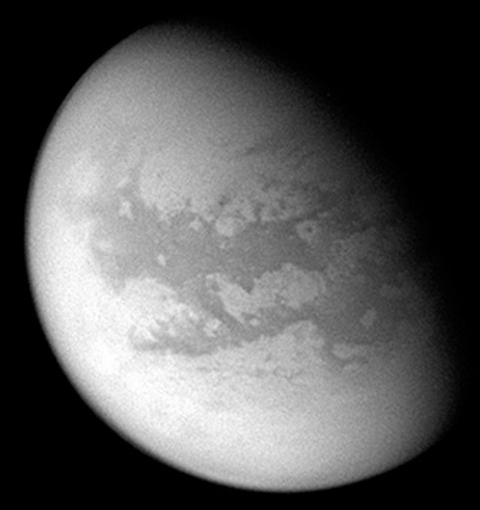
Another possible place to look for life is on Saturn's moon, Titan. The combination of Titan's mass and temperature make it the only moon in our solar system to hold onto a dense, thick atmosphere.
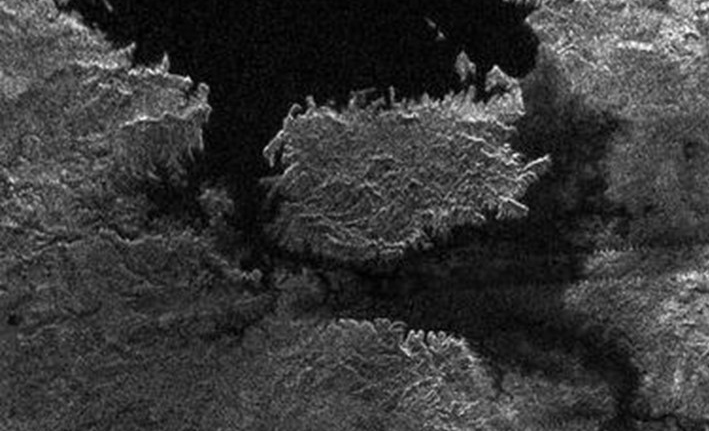
Titan is so cold that water ice is frozen like rock and liquid methane forms lakes on its surface, evaporating and raining back down as water does on Earth. Organic compounds exist in Titan's nitrogen rich atmosphere. If life does exist on Titan, it would have to be fundamentally different from life on Earth. Scientists studying the possibility of life on Titan hypothesize that theoretical membranes formed of nitrogen could remain stable and elastic in conditions found on Titan. Read more here.
Even though we do not know how to make life from inert materials, we can analyze living organisms to understand the chemical makeup involved with life. It seems that a few chemicals were important in creating life, combined with energy of some sort, to create complex organic molecules and the building blocks of life.